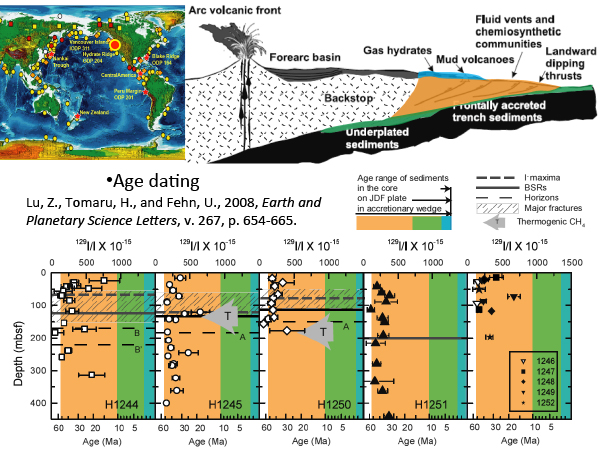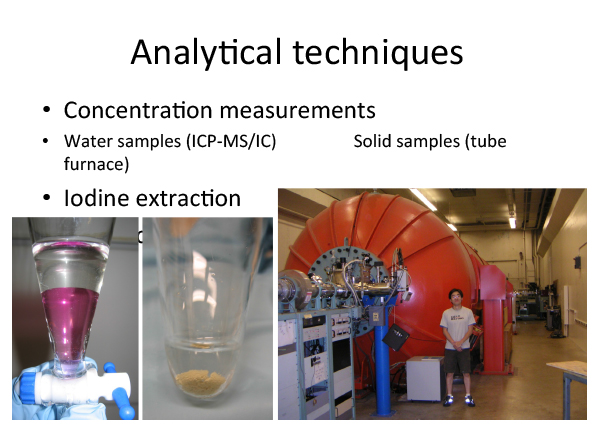Iodine in water as a tracer for fluids and methane
Marine Gas Hydrates
Large amount of methane are produced in marine sediments during organic matter decomposition and stored in gas hydrates. Gas hydrates may be an alternative energy source but global warming may also cause the dissociation of gas hydrates and massive release of gas. Many gas hydrate fields locate in subduction zones, close to the trench. Because of the tectonic compaction, hydrate fields are commonly featured with ubiquitous fluid conduits. Gas and fluid can migrate freely along these pathways up to very long distances. I use I-129 isotope to derive the age of organic source rocks of methane in subduction zones and learn about the long-term recycling of organic carbons.

I-129 and AMS
The cosmogenic radioisotope 129I is produced by the spallation of Xe isotopes in the atmosphere and by spontaneous fission of 238U in the crust. The half-life of 129I is 15.7 Myr which allows age determinations up to 80 Myr.

